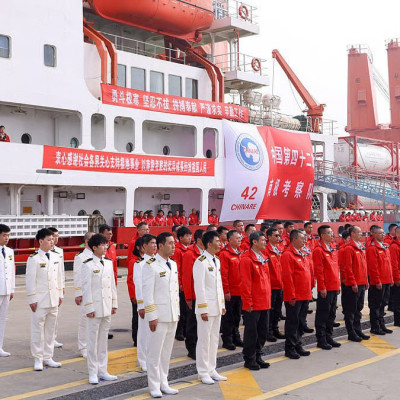
China Set to Drive 100% of Global Polystyrene Capacity Growth by 2030
By 2030, China is expected to become the only country responsible for all global growth in polystyrene production capacity. Between 2025 and 2030, China will add 1.21 million tons of new capacity every year through three planned projects and one additional announced development.
Polystyrene is a lightweight, cost-effective plastic known for its strong insulation properties and is widely used in packaging, building insulation, and foodservice products. According to GlobalData, demand in China — the world’s largest manufacturing economy — continues to rise, driven by the need for packaging materials for both domestic consumption and export markets.

Airlines Suspend 12 China–Japan Routes Amid Rising Tensions
Airlines have halted operations on 12 air routes between China and Japan as diplomatic tensions between the two countries escalate. The restrictions affect several popular destinations, including Nagoya, Fukuoka, Sapporo, Osaka, and others.
Some routes show particularly sharp cuts:
- Tianjin → Kansai (Osaka): −65% flights
- Nanjing → Kansai: −59.4%
- Guangzhou → Kansai: −31.3%
Travel platforms report a significant decline in available flights, making trip planning between the two countries increasingly difficult.

CMA CGM Welcomes a New LNG Giant — “CMA CGM Notre Dame” Launched in China
At Jiangsu Yangzi Xinfu Shipbuilding, the French shipping group CMA CGM has launched its new state-of-the-art container vessel, “CMA CGM Notre Dame.”
The ship measures 399 meters in length with a capacity of 24,000 TEU. It features a dual-fuel propulsion system (LNG + diesel) and LNG storage tanks with a total capacity of 18,600 m³, enabling a range of up to 20,000 nautical miles.
As one of the largest container ships in the world, it can carry up to 2,200 refrigerated containers and will be deployed on Asia–Europe trade routes.
“CMA CGM Notre Dame” continues the company’s series of eco-friendly LNG-powered container vessels, symbolizing CMA CGM’s commitment to reducing emissions and promoting sustainable shipping, in line with the IMO’s decarbonization goals.

China Strikes Back: New Port Fees Threaten to Disrupt Global Shipping
A new escalation is shaking global maritime trade. Over the weekend, several vessels bound for China reportedly turned back to open waters after Beijing announced retaliatory port fees targeting ships linked to the United States. Starting October 14, China will impose an additional fee of 400 yuan per gross ton on all vessels built, operated, registered under the U.S. flag, or even listed on U.S. stock exchanges. The move mirrors Washington’s earlier tariff action on Chinese-owned tonnage, effectively igniting a new round of maritime and trade confrontation between the world’s two largest economies.
According to Jefferies, the new Chinese measures could affect up to 16% of the global crude oil tanker fleet, 14% of LPG carriers, 13% of product tankers, and 11% of container ships — enough to cause major disruptions in global logistics chains. The fee will increase annually, reaching 1,120 yuan per ton by 2028, making China one of the most expensive destinations for vessels with U.S. capital involvement.
Analysts at Arrow Shipbroking Group warn that significant delays are likely in the first days of enforcement, as Chinese ports verify vessel ownership structures and may suspend unloading until confirming the absence of U.S. stakeholders. Meanwhile, Dr. Roar Adland, Head of Research at SSY, commented: “We are witnessing the early stages of a divided global trade system — and shipping will inevitably be caught in between.”
Arrow Shipbroking Group, founded in 1984 in London, is one of the largest independent shipbrokers in the world, specializing in maritime market analysis, risk management, and vessel sale and purchase transactions.

Morocco Marks Major Expansion at Casablanca Port Complex
Morocco has taken a big step in strengthening its maritime position with new development projects at the Casablanca port complex, inaugurated last week under the patronage of King Mohammed VI. The $577 million expansion program includes a renovated fish port, a new shipyard, and an upgraded cruise terminal, alongside a modern office hub to unite port stakeholders.
The $120 million fish port will boost Morocco’s seafood processing and exports, accommodating 260 artisanal boats and 100 coastal vessels. It will feature ice plants, a modern fish market, and dedicated offices for shipowners.
A centerpiece of the expansion is the Casablanca shipyard, backed by a $250 million investment to support Morocco’s goal of building a competitive national commercial fleet. The National Port Agency is preparing to grant operating rights to a private firm for further development.
The newly opened cruise terminal adds another $72 million investment, designed to handle up to 450,000 passengers annually with a 650-meter quay, three gangways, and parking for 44 buses — boosting Casablanca’s profile as a Mediterranean tourism hub.
These developments come as Moroccan ports report record growth: in Q1 2025, cargo throughput reached 60.8 million tons (+10.2% YoY), driven by transshipment activity that made up nearly 50% of traffic. Cruise traffic also surged by 46.9%, with over 55,000 passengers welcomed in the same period.